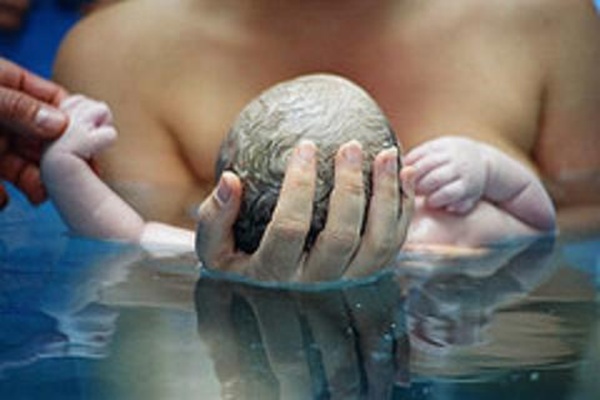Water birthing is a technique of “natural” childbirth that places the mother in a pool of warm water to deliver her baby. This style provides a range of benefits to both mother and child including a faster labor process and a gentler exit from the womb to the world for the infant. Having a midwife, or even multiple midwives, for the process is very common as they can provide additional support for the mother during and after delivery of the baby. This style of childbirth stems from mothers giving birth at home and requiring a method to alleviate pain and normalize the birthing process.

Just as a warm bath relaxes the muscles after a long and stressful day, the process of entering the water for childbirth releases tension and allows for easier adjustments. Generally, midwives and doctors will wait for the mother to be at 5cm before entering the pool to begin the delivery, as any sooner may relax the body too much and cease the labor process entirely. Once immersed in the water, the mother is no longer under the heavy effects of gravity and is free to move about the pool unhindered to reach a more comfortable and natural position. All of this additional movement helps open the pelvis and it is believed that the warm and moist air in the room, from the pool, assists the child in his/her first breathe.
Due to the rise in popularity of this system, and its overall public acceptance, it has become increasingly easy to practice a water birth in birthing centers across the world. A majority of hospitals however do not offer the option of a water birth, though the list of hospitals with the proper facilities is constantly increasing and is now over 300 strong include: Carolina Birthing Center, Baby Love Birth Center, and Natural Birth Center and Woman’s Health.
Of all the forms of natural child birth, the water birth method has become one of the more popular approaches. Despite its popularity and apparent benefits, the technique is the subject of much debate, specifically to the safety of the baby. Protestors feel the method adds unnecessary risk to the birthing process and leads to avoidable complications like pneumonia. Advocates of the procedure cite natural effects of childbirth, such as the physical impediment to breathing immediately after the birth which prevents the child from swallowing any water, and the improved comfort of the mother which reduces the need for drugs. While this is not a perfect process, and no delivery method is, it does provide a more comforting situation for both mother and baby. In the end, it comes down to the decision of the parents if this procedure is to be used.
Jay Bater: marketing strategist of South Carolina
The Popular Rise Of Waterbirthing

